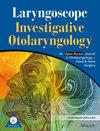From Profiles to Structure in Cochlear Nerve: A Clinical Study of Auditory Neuropathy
Abstract
Objectives
To investigate the clinical and audiological features in auditory neuropathy (AN) patients with different image performance of cochlear nerve (CN) on MRI.
Methods
AN patients were selected from the Multicenter Study on Clinical Diagnosis and Intervention of AN (2003–2023). Subjects were divided into four groups by CN size on MRI: bilateral AN with CN normalization (BANcnn), bilateral CN deficiency (BANcnd), unilateral AN with CND (UANcnd), and CN normalization (UANcnn) groups. Clinical and audiological features were analyzed, alongside differential analysis using the Internal auditory meatus (IAM) grading system.
Results
Totally 132 cases were included. The rate of CND was 35.6% (47/132), with 32.7% (36/110) and 50.0% (11/22) in bilateral and unilateral AN patients. The proportion of IAM I to IV grades increased progressively. Clinical and audiological characteristics differed between bilateral and unilateral AN patients. For bilateral AN patients, the age of onset and diagnosis of BANcnd were older, which were 11.8 ± 7.2 years and 19.5 ± 11.1 years, respectively, compared to patients in BANcnn group. UANcnd patients exhibited more severe hearing loss at all frequencies compared to UANcnn. Prognostic analysis indicated that AN patients with CND had no lower intervention rates.
Conclusion
The detection rate of CND was 35.6%, predominantly in unilateral AN patients and IAM IV was the most common type. Some clinical and audiological indicators were associated with imaging features of CN but varied between bilateral and unilateral AN. Variation in image performance may not be related to prognosis in AN patients.


 求助内容:
求助内容: 应助结果提醒方式:
应助结果提醒方式:


